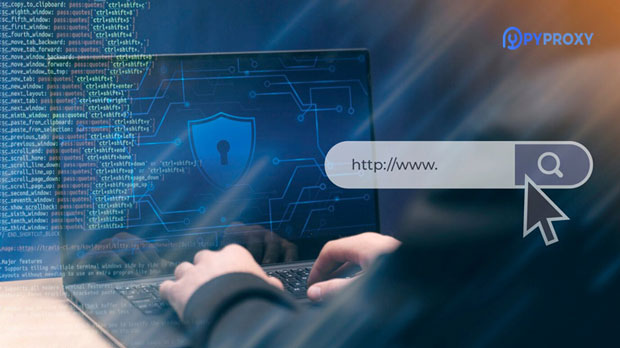In the realm of web scraping, the tools and methods chosen can have a significant impact on the success of data collection efforts. While free proxies are often an appealing option due to their no-cost nature, they come with a set of limitations that can hinder scraping performance. residential proxies, on the other hand, offer several key advantages in terms of reliability, security, and access to a broader range of websites. This article explores the reasons why residential proxies are a better choice over free proxies for web scraping tasks, delving into factors like anonymity, speed, and the ability to bypass restrictions. 1. The Basic Concept of Proxies in Web ScrapingBefore diving into the specific advantages, it's important to understand what proxies are and why they are used in web scraping. A proxy server acts as an intermediary between the user (or scraper) and the target website. When web scraping, proxies are used to mask the scraper’s IP address, making requests appear as though they are coming from different locations or users. This helps avoid detection, protects the scraper's identity, and enables the scraping of large amounts of data without facing IP bans or blocks.There are two main types of proxies used for web scraping: residential proxies and free proxies. Residential proxies are assigned to real physical devices, such as computers or smartphones, and are connected to real ISPs (Internet Service Providers). In contrast, free proxies are typically low-cost or no-cost solutions provided by third-party services, often shared among multiple users.2. Enhanced Anonymity and IP RotationOne of the most significant advantages of using residential proxies over free proxies in web scraping is the enhanced anonymity they provide. Residential proxies are associated with legitimate, residential IP addresses, which makes them appear more like regular user traffic. This helps to avoid detection by websites that may flag scraping activity based on the use of data center IPs or proxies.Free proxies, on the other hand, often come from a limited pool of IP addresses that are frequently used by many users. This heavy traffic can easily lead to the detection of scraping activity. Websites with advanced bot protection mechanisms can identify these IP addresses and block them, resulting in failed scraping attempts and significant delays.Residential proxies rotate IP addresses at frequent intervals, ensuring that requests appear to come from different users or locations. This rotation helps maintain a low profile and allows scrapers to bypass rate limits, geo-blocks, and anti-scraping mechanisms. Free proxies, by contrast, may not offer effective IP rotation, leading to higher chances of being detected and blocked.3. Higher Success Rate in Accessing Target WebsitesAnother major advantage of residential proxies is their higher success rate in accessing target websites. Since residential IP addresses are assigned to real devices and are widely distributed across various locations, they are much harder to block or detect by websites. Websites that implement anti-bot measures often do so by flagging suspicious IP addresses or blocking known proxy servers. Residential proxies, with their legitimacy and decentralized nature, bypass these detection techniques more effectively.Free proxies, on the other hand, are often unreliable in terms of accessing specific websites. These proxies may be listed on blacklists, shared by many users, or associated with suspicious traffic patterns. This makes it more likely that web scraping attempts using free proxies will be blocked or interrupted. In addition, free proxies are usually slower and may lead to inconsistent results, disrupting the scraping process.4. Reduced Risk of IP Bans and BlockingUsing free proxies for web scraping introduces a significant risk of IP bans or blocking. Since free proxies are shared among multiple users, they have a higher likelihood of being flagged for suspicious activity. Websites, especially those with sophisticated security systems, can quickly detect the overuse of certain IPs and impose restrictions. This leads to downtime and loss of scraping capabilities, requiring time and effort to resolve the issue.Residential proxies, on the other hand, are far less likely to be flagged as suspicious. Because they come from real residential devices, websites cannot easily distinguish between legitimate user traffic and web scraping. This significantly reduces the likelihood of encountering IP bans, ensuring a more stable and continuous scraping process. Additionally, residential proxy providers often offer dedicated support to resolve any issues that arise, further minimizing disruptions.5. Scalability and Flexibility for Large-Scale ScrapingWhen performing large-scale web scraping tasks, such as gathering data from multiple websites or making a high volume of requests, scalability and flexibility become critical. Residential proxies offer better scalability for these tasks because they provide access to a large number of diverse IP addresses, allowing users to distribute scraping requests across many different proxies. This reduces the load on any single IP address and improves the overall efficiency of the scraping operation.Free proxies, in contrast, may not provide the same level of scalability. They are often limited in number and may not be able to support high-volume scraping. As more requests are made from the same IP addresses, websites are more likely to block or throttle access, leading to incomplete or failed data extraction. Additionally, free proxies may lack the customization options required for more advanced scraping strategies, further limiting their usefulness in large-scale operations.6. Better Speed and PerformanceThe performance of a web scraping operation is greatly influenced by the speed at which data can be retrieved. Residential proxies typically offer better speed and performance compared to free proxies. Since residential proxies are often provided with dedicated bandwidth and less congestion, they are capable of handling high volumes of requests without significant delays. Additionally, residential proxies are less likely to experience downtime, ensuring a smooth scraping process.Free proxies, on the other hand, are often overcrowded and can suffer from poor speed and performance. Since many users share the same proxy, it can result in slower response times and increased latency. This can negatively impact the efficiency of scraping tasks, especially when large datasets need to be gathered quickly. Furthermore, free proxies are more likely to experience frequent outages or connectivity issues, further compromising scraping success.7. Conclusion: Why Residential Proxies Are a Smarter ChoiceWhile free proxies may seem appealing due to their cost-free nature, they come with significant drawbacks when it comes to web scraping. The limitations in terms of anonymity, reliability, and performance make them a less optimal choice for serious scraping tasks. Residential proxies, on the other hand, provide superior security, better access to target websites, and greater stability, all of which contribute to a more successful and efficient scraping operation.For businesses or individuals involved in large-scale or high-frequency web scraping, residential proxies offer the necessary tools to overcome the challenges posed by anti-scraping measures and deliver reliable, accurate data. By investing in residential proxies, users can ensure that their scraping efforts remain effective, scalable, and free from the risks associated with using free proxies.
Apr 21, 2025
![arrow]()




























































